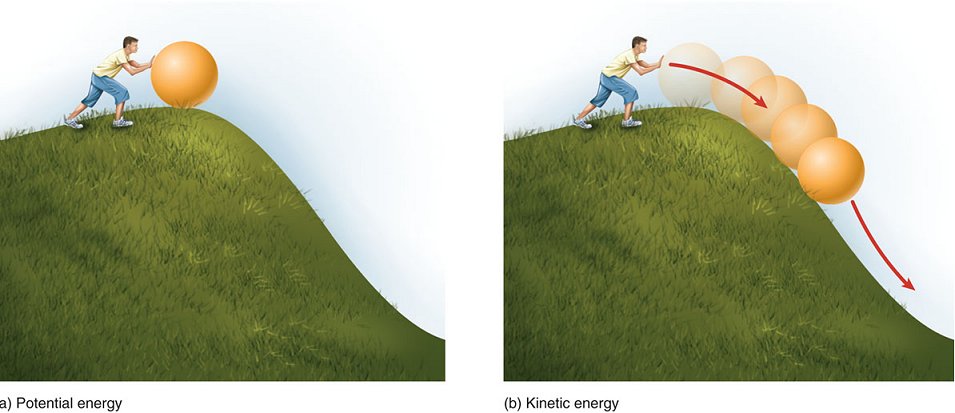What does cycle energy tell us?
Pedaling not only overcomes resistance, but anything beyond that is “stored” in the cycle either by increasing its velocity or its elevation. Cycle Energy is the ledger that tells us how much has been stored and is available to be used when the cyclist is not pedaling. Cycle Energy discussions shifts the focus from the cyclist to the cycle.
What are potential and kinetic energies?
Cycle Energy is bank with two types of accounts: Kinetic and Potential. Kinetic Energy is deposited whenever pedaling is in excess of that needed to overcome resistive forces. When you are coasting, you are making a withdrawal from your Kinetic Account.

A cycle’s kinetic energy is computed as follows and varies as the CyclistCycle speed varies. The faster you are going, the greater your kinetic energy, and the further you can coast.
Kinetic Energy = ½ mv²
Potential Energy is generated whenever pedaling results in an an elevation gain. Climbing makes a deposit into your Potential Energy account. When you are descending, you are making a withdrawal from your Potential Energy account.
A cycle’s current Potential Energy is computed as follows:
Potential Energy = mgh = Weight * h
Here, h is the elevation gain and weight is for the CyclistCyle. The greater the elevation gain, the greater the potential energy.
Is it possible to make contributions to both accounts at the same time? This happens if you are accelerating while climbing, which is something that happens more with an Elite cyclist rather than a recreational.
Cycle Energy Gain and Cyclist Work
How much work must a cyclist due to add to the cycle energy accounts? The answer is the change in the account amount is equal to the amount of work done by the cyclist.
For example, when climbing, the work performed by the cyclist is exactly equal to the change in potential energy, that is mgh. This is one of the benefits of gravity being a conservative force. Similarly, if a cyclist wants to speed up, the work they must perform is equal to the differences in the kinetic energies.
Transferring Potential Energy to a Kinetic Energy Account
If you are riding on the flats, your Potential Energy Account is empty. But if you are making a descent, both are in play and as you descend, your potential energy account is depleted as you move lower and your kinetic energy account is increasing as your speed increases.

At the bottom, all of your potential energy has been converted to kinetic energy. While there are many practical factors that influence your speed at the bottom such as riding position, setting your potential energy equal to kinetic energy yields a rough estimate of your speed at the bottom.
½ mv² = mgh
v² = 2gh
v = √2gh
Notice that this result is independent of the cyclist mass. Different mass cyclists each achieve the same speed at the bottom.
Next Topic: Cycling Motion Equations
